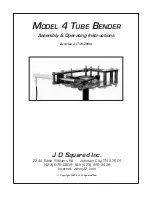
6-2
IM 701730-17E
6.1 Overview of the Status Report/6.2 Status Byte
Overview of Registers and Queues
Name
Function
Writing
Reading
Status byte
—
Serial poll (RQS),
*STB?
(MSS)
Service request
Masks status byte.
*SRE
*SRE?
enable register
Standard event
Change in device
—
*ESR?
register
status
Standard event
Masks standard
*ESE
*ESE?
enable register
event register
Extended event
Change in device
—
STATus:EESR?
register
status
Extended event
Masks standard
STATus:EESE STATus:EESE?
enable register
event register
Condition
Current instrument
—
STATus:
register
status
CONDition?
Transit filter
Extended event
STATus:
STATus:
occurrence conditions
FILTer<x>
FILTer<x>?
Output queue
Stores response message
All executable queues
to a query.
Error queue
Stores error Nos.
—
STATus:ERRor?
and messages.
Registers and Queues which Affect the Status Byte
Registers which affect each bit of the status byte are
shown below.
Standard event register:
Sets bit 5 (ESB) of status byte to
"1"
or
"0."
Output queue:
Sets bit 4 (MAV) of status byte to
"1"
or
"0."
Extended event register:
Sets bit 3 (EES) of status byte to
"1"
or
"0."
Error queue:
Sets bit 2 (EAV) of status byte to
"1"
or
"0."
Enable Registers
Registers which mask a bit so that the bit does not
affect the status byte, even if the bit is set to
"1,"
are
shown below.
Status byte:
Masks bits using the service request enable register.
Standard event register:
Masks bits using the standard event enable register.
Extended event register:
Masks bits using the extended event enable register.
Writing/Reading from Registers
The *ESE command is used to set bits in the standard
event enable register to
"1"
or
"0,"
and the
*ESE
query is used to check whether bits in that register are
set to
"1"
or
"0."
For details of these commands,
refer to Chapter 5.
6.2
Status Byte
Overview of Status Byte
7
6
ESB MAV EES EAV
1
0
RQS
MSS
Bits 0, 1 and 7
Not used (always
"0"
)
Bit 2 EAV (Error Available)
Set to
"1"
when the error queue is not empty, i.e.
when an error occurs. For details, refer to page 6-5.
Bit 3 EES (Extended Event Summary Bit)
Sets to
"1"
when the logical "AND" of an Extended
Event Register bit and the corresponding Enable
Register bit is equal to
"1."
—that is, when an event
takes place in the instrument. Refer to page 6-4.
Bit 4 MAV (Message Available)
Set to
"1"
when the output queue is not empty, i.e.
when there is data which is to be output when an query
is made. Refer to page 6-5.
Bit 5 ESB (Event Summary Bit)
Set to
"1"
when the logical AND of the standard event
register and the corresponding enable register is
"1,"
i.e. when an event takes place in the instrument. Refer
to page 6-3.
Bit 6 RQS (Request Status)/MSS (Master Summary
Status)
Sets to
"1"
when the logical
"AND"
of any one of the
Status Byte bits (other than bit 6) and the
corresponding Service Request Enable Register bit
becomes
"1"
—that is, when the instrument is
requesting service from the controller.
RQS is set to
"1"
when MSS changes from
"0"
to
"1,"
and is cleared when a serial poll is performed or
when MSS changes to
"0."
Bit Masking
To mask a bit in the status byte so that it does not
cause an SRQ, set the corresponding bit of the service
request enable register to
"0."
For example, to mask bit 2 (EAV) so that no service
will be requested, even if an error occurs, set bit 2 of
the service request enable register to
"0."
This can
be done using the
*SRE
command. To query whether
each bit of the service request enable register is
"1"
or
"0,"
use
*SRE?
. For details of the
*SRE
command, refer to Chapter 5.
















































